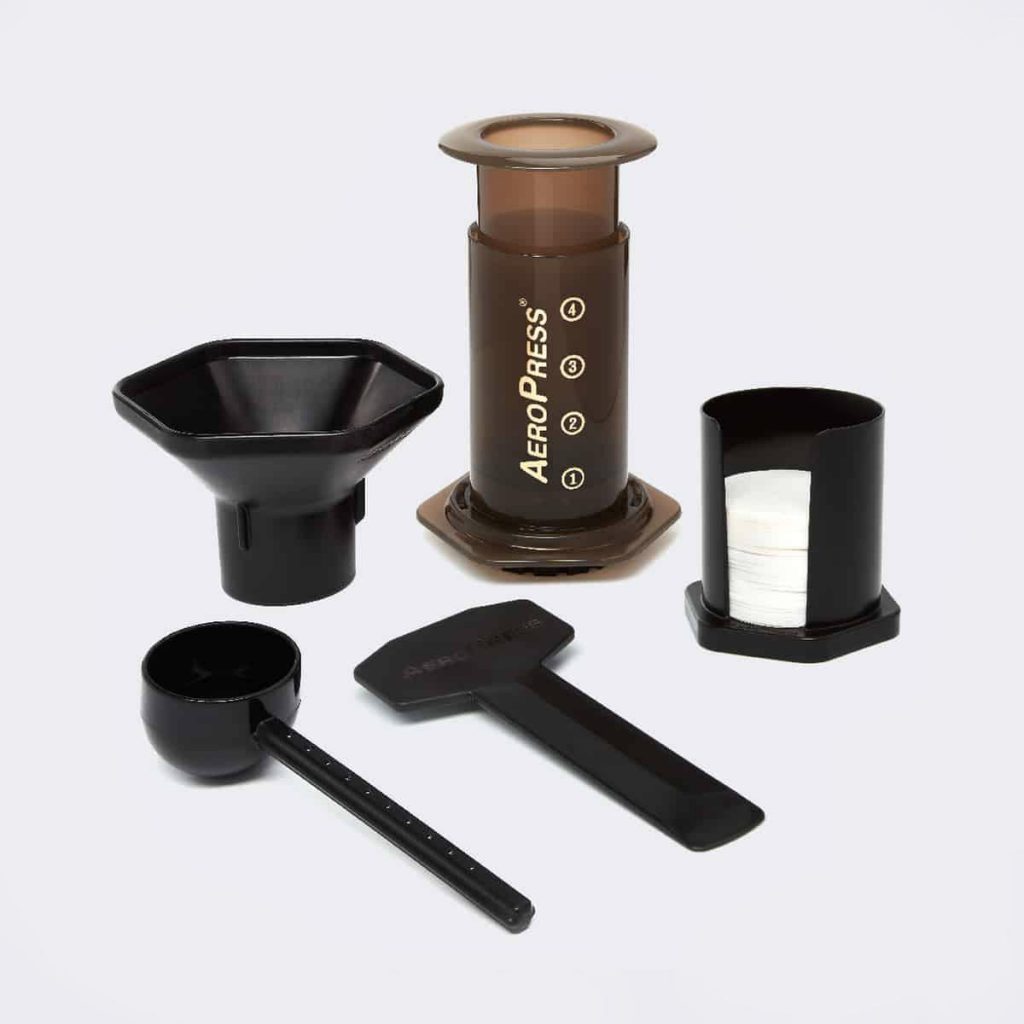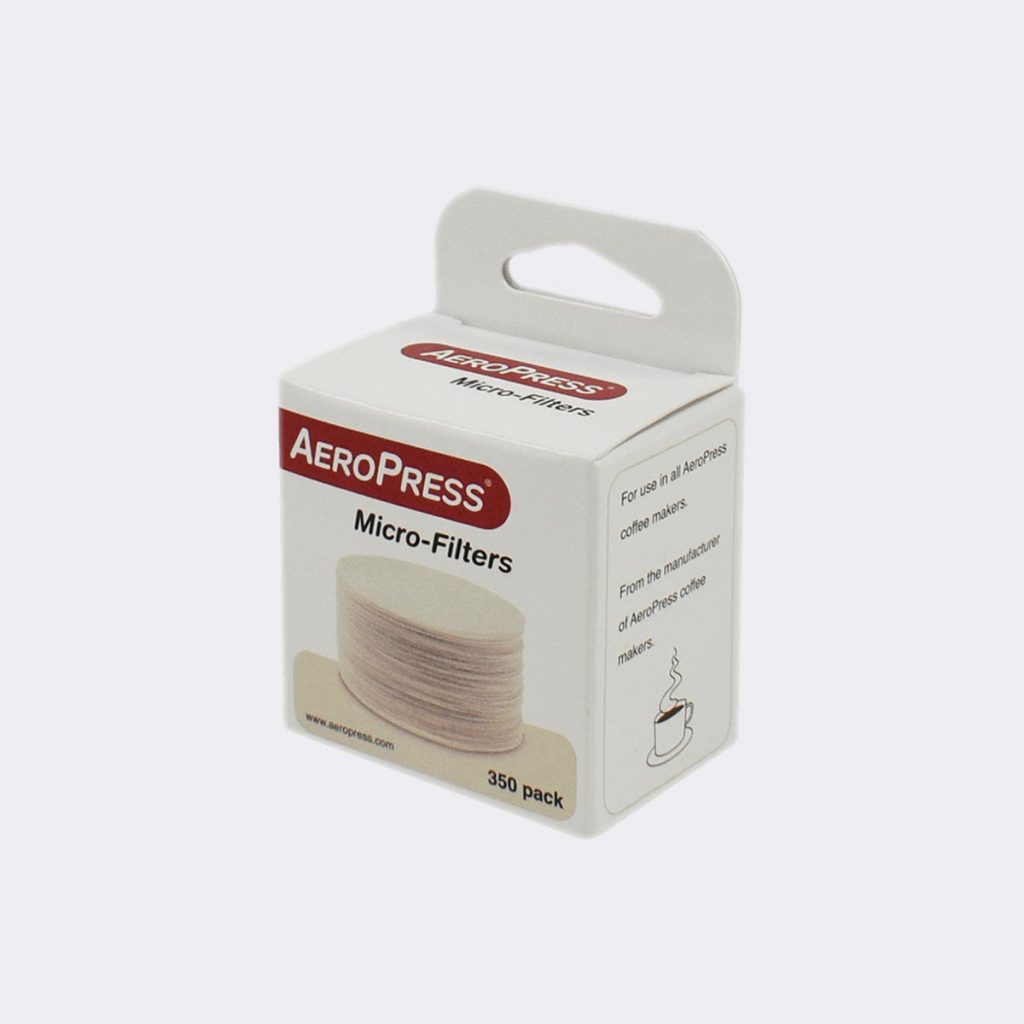The AeroPress is without a doubt one of the cleverest coffee-related creations in recent history. It’s fundamentally a manual espresso machine that utilizes pressure to brew delicious coffee but it is also relatively small and easy to use.
Before we go any further let’s answer the easy questions about the AeroPress and AeroPress espresso first. Can you actually make an espresso with an AeroPress?
Well, yes but also no… maybe somewhere in the middle.
Okay, well perhaps that wasn’t such an easy question to answer. An AeroPress espresso may be a tasty drink but it is also an enigmatic one as well. Let me explain why.

What Is an Espresso?
Let’s say that you asked a dozen coffee aficionados to go into detail about how they make their espressos. It actually wouldn’t be surprising if you ended up with a dozen similar, yet slightly different answers.
But what exactly is an espresso?
What Do the Experts Say?
CoffeeResearch.org defines a double espresso as:
“a 47-62.5 mL (1.5-2 ounce) extract that is prepared from 14-17 grams of coffee through which purified water of 88-95°C has been forced at 9-10 atmospheres of pressure for a brew time of 22-28 seconds.”
Similarly, the Specialty Coffee Association of America (SCAA) defines an espresso as:
“a 25–35ml (.85–1.2 ounce [×2 for double]) beverage prepared from 7–9 grams (14–18 grams for a double) of coffee through which clean water of 195°–205°F (90.5°–96.1°C) has been forced at 9–10 atmospheres of pressure, and where the grind of the coffee is such that the brew time is 20–30 seconds.”
The Main Takeaway
Even these two reputed sources have slight variations in several of their figures. However, there is one factor that both of them mention which is identical: “9–10 atmospheres of pressure”.
Coincidentally, this is exactly where the AeroPress espresso method falls short.
How the AeroPress Espresso Method Buckles Under the Pressure
As we highlighted in the beginning, the AeroPress utilizes pressure to brew coffee. Also, we’ve come the conclusion that an espresso machine uses 9-10 atmospheres of pressure to create an espresso.
The official AeroPress website states that their device is only capable of generating between 25 lbs./4.9 sq. in and 50 lbs./4.9 sq. in of pressure. That roughly equates to between 0.35 and 0.70 atmospheres of pressure. Nowhere close to the amount of pressure that an espresso machine would use to create an espresso.

Don’t Throw in The Towel Just Yet!
Were you wrong to think that AeroPress espresso was an attainable goal? Should you just pony up for an (more expensive) espresso machine and call it a day?
If you don’t want to splurge on an espresso machine then don’t worry, you can make a convincing faux espresso at home with your affordable AeroPress.
How to Make the Perfect AeroPress Espresso
What You’ll Need
Optional
- Scale
- Timer

The Process
- Place the filter in the filter cap and give it a light rinse with some hot water.
- Grind your beans until they are fine (similarly to how you would for an espresso). However, keep in mind that (especially since you’re using an AeroPress) if your grind is too fine then blockages may occur. On the other hand, if your grind is too coarse then you won’t be able to fully extract the flavor.
Method 1
- Put the grounds into your AeroPress and then slowly pour in hot water (between 195 ºF and 205 ºF) to level 2 (or your desired amount)
- Shake your AeroPress in a circular motion (or stir the contents) for 12 to 15 seconds.
- Place the filter cap onto the AeroPress and position it onto your mug. Now just pump the plunger steadily until you have push out all of the liquid.
Method 2
- Screw the filter cap onto the bottom of your AeroPress, place your coffee grounds into in your AeroPress, then tamp them.
- Place another filter on top of the grounds (wet it lightly with hot water) and then pour in hot water (between 195 ºF and 205 ºF) to level 2 (or your desired amount).
- Insert the plunger and press your espresso into your mug. It should take a considerable amount of force – depending on the fineness of your grind and how much you’ve tamped – but it’s worth it.
The End Result
Regardless of which of the above methods you’ve used, the end result should be a faux espresso that still delivers an intense flavor.

So, how will your AeroPress Espresso measure up against a real espresso? Well, first and foremost, it’s not going to be as strong or as concentrated as a real espresso.
In addition to this, the iconic creama layer that is present in a real espresso can be found in an AeroPress Espresso. However, the bubbles won’t be as fine and they dissipate quickly. Lastly, real espresso’s usually have a syrupy, heavy body but on the other hand, an AeroPress espresso will have a body that is only marginally heavier than normal.


2 comments
Under method 2, you day tamp your grounds and then put them in your aeropress, is this correct? Don’t you mean put your grounds in the aeropress and then tamp the grounds?
Thanks,
Chris
Hi Chris,
Thank you so much for pointing that out! I’ve edited the instructions.
We really appreciate it,
Ralph